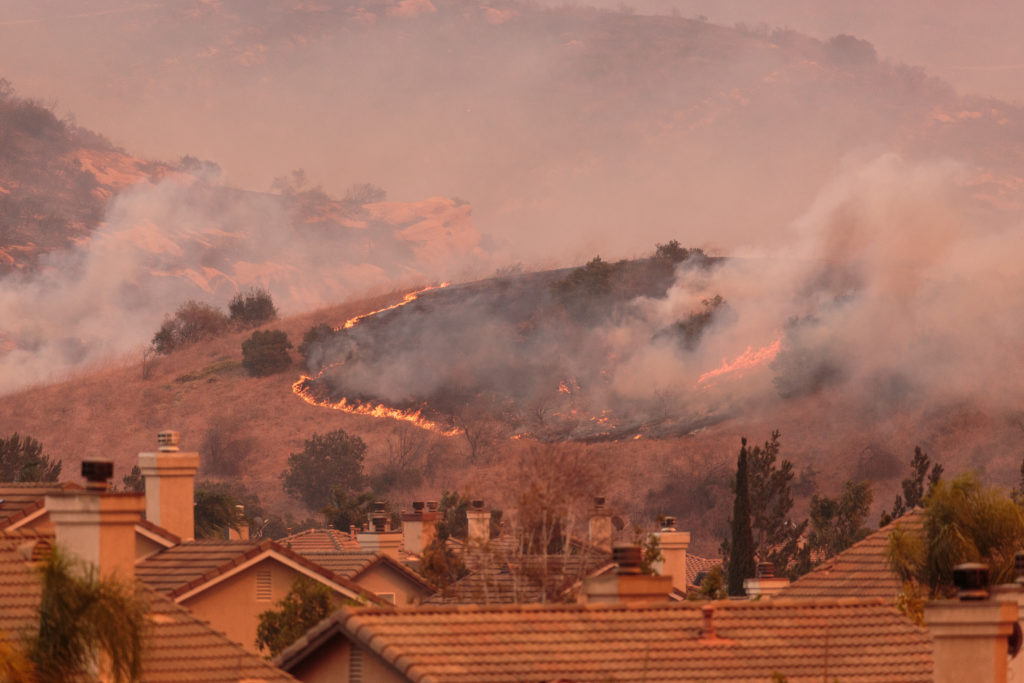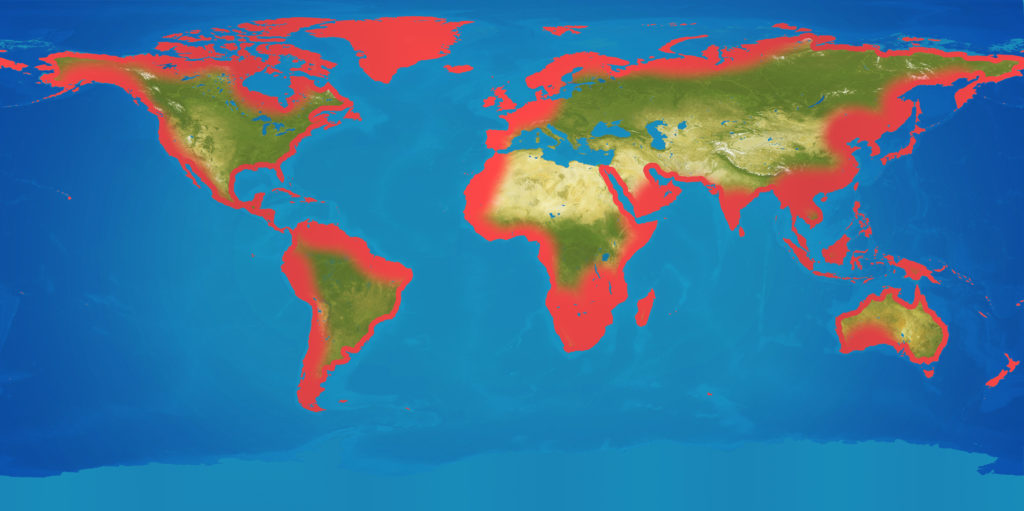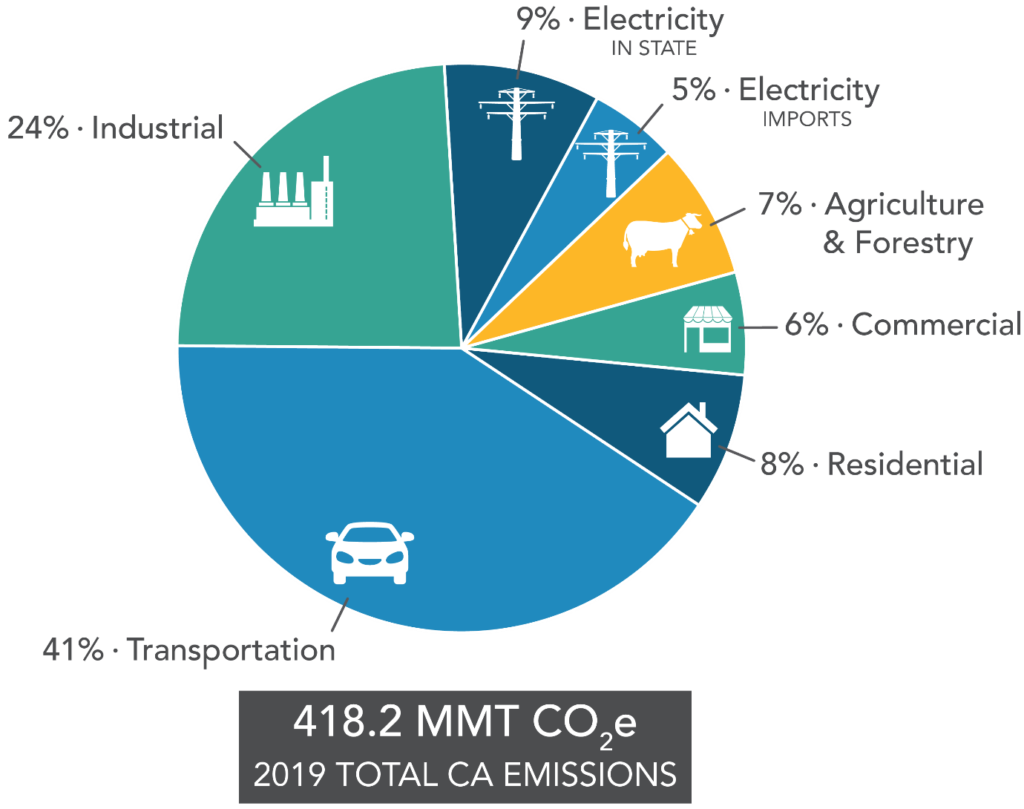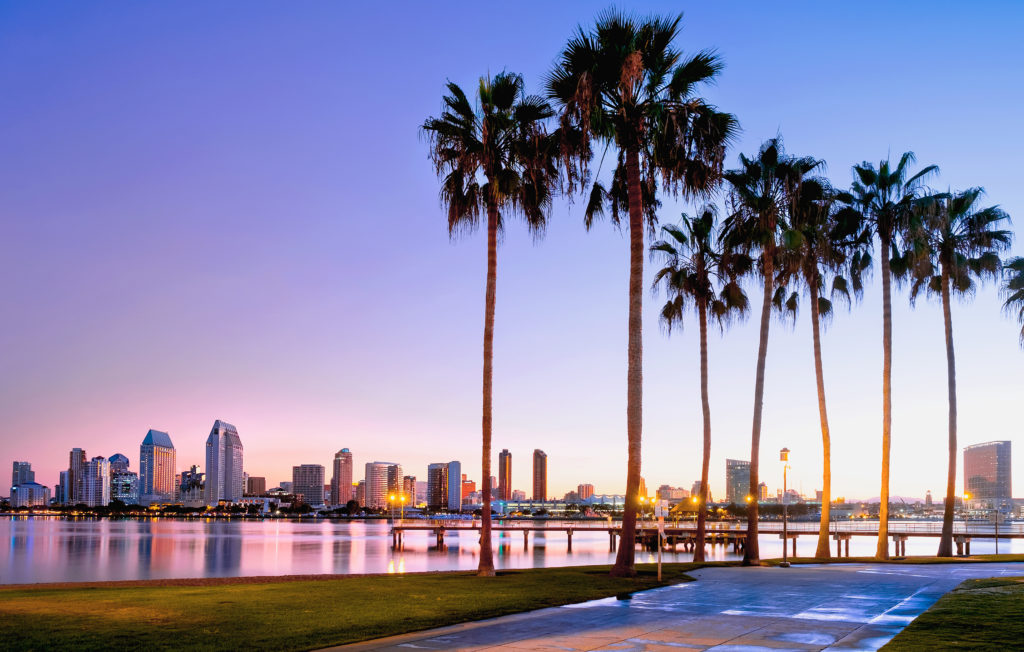By: Isabela Claret Torres, MSc, Ph.D.
California is increasingly susceptible to climate change. Most of California has a Mediterranean climate with warmer and drier summers and cooler wetter winters. But the climate is diverse going from hot desert to alpine tundra. According to the KÖPPEN climate classification system, California has 11 climate types. At the coastal areas there is more moderate temperatures, creating warmer winter and cooler summers due to the ocean influence.
The United States
California is the most populous state in the United States and a global economic powerhouse. It has the most powerful movie industry in the world and the Silicon Valley. However, the climate, as said before, is the most varied and volatile. California has experience periods of droughts throughout its history. In general, a drought is an extreme event characterized by a prolonged period of abnormally low levels of precipitation. It has adverse impacts on vegetation and animals.
A drought is a temporary phenomenon and occur periodically in every climatic zone. Some areas are more drought-prone like in California than others. In the last century, the most significant statewide droughts occurred during the six-year period from 1929 to 1934, the two-year period from 1976 to 1977, the six-year period from 1987 to 1992, and the five-year period from 2012 to 2016. The 2012-2016 drought was one of extreme proportions, with record-high temperatures and record-low levels of snowpack and precipitation.
Climate Change Worldwide
As well as other parts of the world like in Australia, Brazil, the California vegetation needs fire to complete its cycle. Fire is a natural component of many of the earth ecosystems and natural occurring fires are necessary for the ecosystem functioning. In California, the chaparral plants are adapted to fire, as many has heat resistant seeds, and after a fire the plants sprout, grow and spread rapidly. The giant sequoias also need fire, the trees are protected by a fibrous bark, but its seed need to fall on a partially burned or bared mineral soil to germinate successfully. One important aspect of fires is that it transforms the organic matter in inorganic, making nutrients available for seedlings sprouts. Conifer Trees also need fire, as the seed cones require heat to open up falling in an inorganic rich soil.
Among California beauties are the long Pacific coast, where approximately 85% of California’s population live and work in coastal counties. But like the rest of world, California is facing a pressing issue: climate change.
American Environmental Protection Agency
As stated by the American Environmental Protection Agency (EPA) California’s climate is changing. Southern California has warmed about three degrees Fahrenheit in the last century and all of the state is becoming warmer. Heat waves are becoming more common, snow is melting earlier in spring—and in southern California, less rain is falling as well. In the coming decades, the changing climate is likely to further decrease the supply of water, increase the risk of wildfires, and threaten coastal development and ecosystems.
The main impacts of climate change in California are:
Sea Level Rises, Coastal Flooding & Coastal Erosion
Around 8 inches of sea level rise was recorded in California in the past century. It is projected to rise as much as 20 to 55 inches by the end of the century. If this occurs, it will put almost half a million people at risk of flooding by 2100. A $100 billion infrastructure and housing will be threatened. Coastal erosion is another fact that can cost $46 billion per year on ocean-based economy. Other fact is that with the sea level rise, the sea water will contaminate freshwater ecosystems threatening wildlife and the source of drinking water for 20 million Californians. Agriculture will also be affected in low area with the salt contaminated water.
The Sierra Snowpack
The snow packs from the Sierra Nevada are an important natural reservoir of water and for entertainment in California. Under current conditions, the snowpack is created in fall and winter and slowly releases about 15 million acre-feet of water in the spring and summer, when California needs it most. California’s dams and water storage facilities are built to handle the snow melt as it happened in the past. Higher temperatures are now causing the snowpack to melt earlier and all at once. Earlier and larger releases of water could overwhelm California’s water storage facilities, creating risk of floods and water shortages. The diminishing snowpack can shorten the season for skiing and other forms of winter tourism and recreation causing economic damage.
Decreasing Water Supply
Following EPA report the changing climate is likely to increase the need for water but reduce the supply. Rising temperatures increase the rate at which water evaporates into the air from soils and surface waters. Irrigated farmland would also need more water. But less water is likely to be available, because precipitation is unlikely to increase as much as evaporation. Also as seen before the snowpacks won’t be able to be used for water supply as usual. Soils are likely to be drier, and periods without rain are likely to become longer, making droughts more severe. Increasing temperatures and declining rainfall in nearby states have reduced the flow of water in the Colorado River, a key source of irrigation water in southern California.
California Wildfires

Higher temperatures and drought are likely to increase the severity, frequency, intensity and extent of wildfires, which could harm property, wildlife and human health. The combination of more fires and drier conditions may expand deserts and otherwise change parts of California’s landscape. Many plants and animals living in arid lands are already near the limits of what they can tolerate. A warmer and drier climate would generally expand the geographic ranges of the Sonoran, Mojave, and Great Basin deserts.
Forest and rangelands cover over 80% of California’s area and are vulnerable to fires by increasing temperatures and making forests and brush drier. Today’s fire season in the western United States starts earlier, lasts longer, and is more intense than in the last several decades. Fires are very costly, in 2020, for example, a team of researchers studied the nationwide impact of California’s 2018 wildfire season and estimated that its economic damage totaled $148.5 billion. In 2018, there were a total of 103 confirmed fatalities, 24,226 structures damaged or destroyed, and 8,527 fires burning 1,975,086 acres (799,289 ha), about 2% of the state’s 100 million acres of land. It was considered the deadliest fire in California history.
Damage to Agriculture
Global warming can cause drought, higher temperatures, saltwater contamination through rising sea levels, flooding, and increased risk of pests. These changes pose a very serious threat to California’s agricultural industry, which generated $39 billion in revenue in 2007, and which is responsible for more than half of all domestic fruits and vegetables. About 90 percent of crops harvested in California are grown on farms that are entirely irrigated, so a sustained decrease in the amount of water available for irrigation would force farmers to either reduce the acreage under cultivation or shift away from the most water-intensive crops. But even if sufficient water is available, rising temperatures could transform California’s agriculture
Temperature Rises and Heat Waves
Average summer temperatures in California have risen by approximately 3 degrees Fahrenheit (1.8℃) since 1896, with more than half of that increase occurring since the early 1970s. If global greenhouse gas emissions continue at current rates, the state is likely to experience further warming by more than 2 degrees Fahrenheit more by 2040, more than 4 degrees Fahrenheit by 2070, and by more than 6 degrees Fahrenheit by 2100. Higher temperatures and more heat waves will drive up demand electricity for cooling in the summer. As people turn up their air conditioners, increased electricity use will be greatest in southern California and the Central Valley and may be as high as 60% above present demand by the end of the century.
Hot days can be unhealthy—even dangerous. Certain people are especially vulnerable, including children, the elderly, the sick, and the poor. High air temperatures can cause heat stroke and dehydration, and affect people’s cardiovascular, respiratory, and nervous systems. Higher temperatures are amplified in urban settings where paved and other surfaces tend to store heat.
Rising Sea Levels
The sea level off California’s coast is up to 6 inches higher than it was in 1950. The sea level is likely to rise between one and four feet in the next century. Even a 16-inch rise could threaten coastal highways, bridges, and the San Francisco and Oakland airports. A rise of three feet would increase the number of Californians living in places that are flooded by a 100-year storm from about 250,000 today to about 400,000.

Along some ocean shores, homes will fall into the water as beaches, bluffs, and cliffs erode; but along shores where seawalls protect shorefront homes from erosion, beaches may erode up to the seawall and then vanish. The sea could also submerge wetlands in San Francisco Bay and other estuaries, which would harm local fisheries and potentially remove key intertidal feeding habitat for migratory birds.
By 2050, almost $18 billion worth of residential and commercial buildings could be flooded due to sea level rise. Further projections estimate that more than half a million people and $150 billion in property in California will be at risk of flooding by 2100
Habitat Destruction and Loss of Ecosystems
California is one of the most biologically diverse regions of the world, with the highest number of unique plant and animal species of all 50 states and the greatest number of endangered species. Climate change will adversely affect plant and wildlife habitats and the ability of the State’s varied ecosystems to support clean water, wildlife, fish, timber and other goods and services important for our well-being.
Oceans & Climate Change
California has recently experienced unprecedented events along its coasts including a historic marine heat wave, record harmful algal blooms, fisheries closures, and a significant loss of northern kelp forests. These events increase concern that coastal and marine ecosystems are being transformed, degraded, or lost due to climate change impacts, particularly sea-level rise, ocean acidification, and warming.
The carbon emissions to the atmosphere are one of the major contributors to climate change. The amount of carbon that someone generates can be referred as carbon footprint (Link to the carbon footprint article). In California the total, statewide 2019 carbon footprint was 418.2 million metric tons of greenhouse gases (GHG), compared to 425.4 million metric tons in 2018, almost 13 million metric tons below the 2020 target. Transportation emissions declined 3.5 million metric tons between 2018 and 2019, and electricity generation emissions dropped 4.3 million metric tons. Per capita GHG emissions in California have dropped from a 2001 peak of 14.0 tons per person to 10.5 tons per person in 2019, a 25 percent decrease and is about half of the national average for per capita emissions.

California households emit 33% less carbon than any other state, while the per-capita footprint in San Francisco is nearly three times lower than the national average. But the climate change is leading California to reduce its carbon footprint and contributes to the fight against global climate change. So far, the governor has signed executive orders requiring that all new cars to be electric by 2035, as cars, trucks and other vehicles comprise about 40% of the state’s climate-changing pollution.
Renewable Energy
The administration has also adopted a building code to transition new buildings to clean energy sources. And California in 2020 become the first state to pledge to protect 30% of land and coastal waters by 2030. California has the highest number of residential solar customers across the country and the incentive program has been a primary driver of that growth.
About the Author:
Isabela started her work with the environment in 1993 as a Biology Bachelor student at the highly regarded Federal University of Minas Gerais (UFMG/Brazil). Later she joined the Graduate Program on Ecology, Conservation and Management of the Wildlife of the same University (UFMG/Brazil) where she received her Masters degree in 1999. Later, she received her Ph.D. on Soil and Water Science at the University of Florida (USA). During her Ph.D. studies she received an Outstanding Student Poster Award at the ASLO (American Society of Limnology and Oceanography) 2006 Summer Meeting held in Victoria (Canada). After working for the State Government Secretary, consulting environmental company and watershed management company she began her post-doctorate in the Geography Department at UFMG (Brazil). Throughout her career she gathered knowledge and specialized on Biology, Ecology, Soil Science, Limnology, Paleolimnology, Biogeochemistry, Organic Geochemistry, Metal and Environmental pollution.
Sources:
California – Climate | Britannica
What Climate Change Means for California (epa.gov)
California economy: How much do wildfires cost? – CalMatters
FAQ: Climate Change in California | Scripps Institution of Oceanography (ucsd.edu)
California’s Sea Level Rise – Sea Level Rise
California Greenhouse Gas Emission Inventory Program | California Air Resources Board
California has lowest carbon emissions in United States (mercurynews.com)
Newsom: California in transformational moment to fight climate change (cnbc.com)

